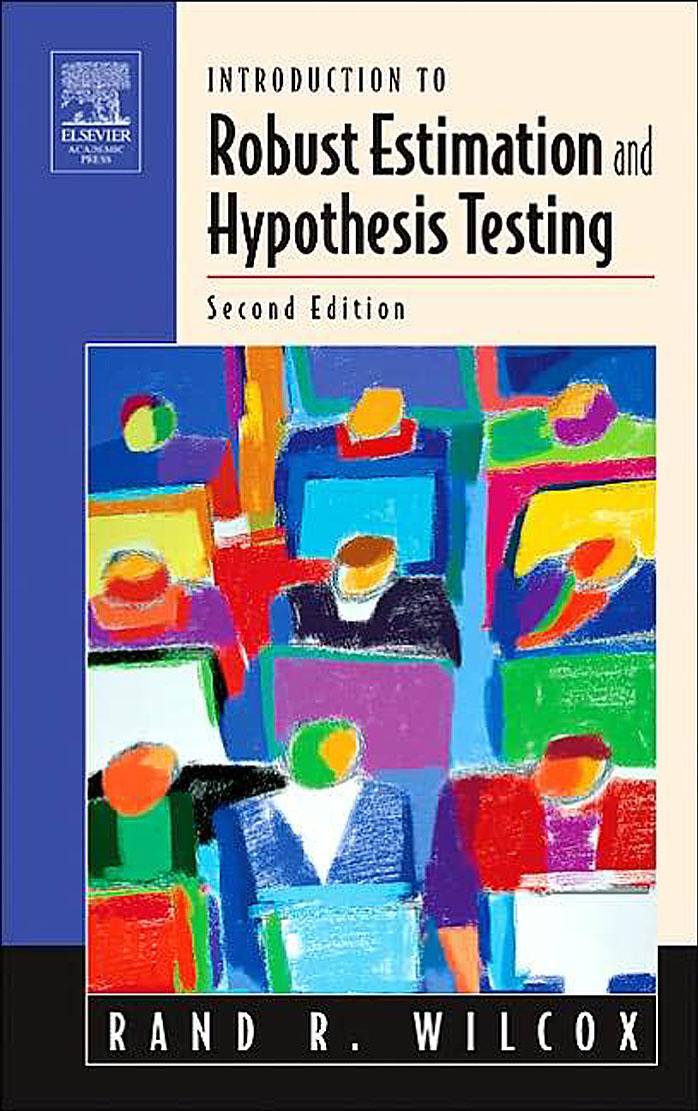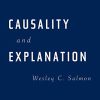(EBOOK PDF)Introduction to Robust Estimation and Hypothesis Testing Second Edition by Rand Wilcox 9780127515427 0127515429 full chapters
$50.00 Original price was: $50.00.$35.00Current price is: $35.00.
Introduction to Robust Estimation and Hypothesis Testing Second Edition by Rand Wilcox – Ebook PDF Instant Download/Delivery: 9780127515427, 0127515429
Full download Introduction to Robust Estimation and Hypothesis Testing Second Edition after payment

Product details:
• ISBN 10:0127515429
• ISBN 13:9780127515427
• Author:Rand Wilcox
Introduction to Robust Estimation and Hypothesis Testing
This revised book provides a thorough explanation of the foundation of robust methods, incorporating the latest updates on R and S-Plus, robust ANOVA (Analysis of Variance) and regression. It guides advanced students and other professionals through the basic strategies used for developing practical solutions to problems, and provides a brief background on the foundations of modern methods, placing the new methods in historical context. Author Rand Wilcox includes chapter exercises and many real-world examples that illustrate how various methods perform in different situations.
Introduction to Robust Estimation and Hypothesis Testing, Second Edition, focuses on the practical applications of modern, robust methods which can greatly enhance our chances of detecting true differences among groups and true associations among variables.
* Covers latest developments in robust regression
* Covers latest improvements in ANOVA
* Includes newest rank-based methods
* Describes and illustrated easy to use software
Introduction to Robust Estimation and Hypothesis Testing Second Table of contents:
Chapter 1: Introduction
1.1 Problems with Assuming Normality
1.2 Transformations
1.3 The Influence Curve
1.4 The Central Limit Theorem
1.5 Is the ANOVA F Robust?
1.6 Regression
1.7 More Remarks
1.8 Using the Computer: R and S-PLUS
1.9 Some Data-Managment Issues
Chapter 2: A Foundation for Robust Methods
2.1 Basic Tools for Judging Robustness
2.2 Some Measures of Location and Their Influence Function
2.3 Measures of Scale
2.4 Scale-Equivariant M-Measures of Location
2.5 Winsorized Expected Values
Chapter 3: Estimating Measures of Location and Scale
3.1 A Bootstrap Estimate of a Standard Error
3.2 Density Estimators
3.3 The Sample Trimmed Mean
3.4 The Finite-Sample Breakdown Point
3.5 Estimating Quantiles
3.6 An M-Estimator of Location
3.6.1 Computing an M-Estimator of Location
3.6.2 R and S-PLUS Function mest
3.6.3 Estimating the Standard Error of the M-Estimator
3.6.4 R and S-PLUS Function mestse
3.6.5 A Bootstrap Estimate of the Standard Error of
3.6.6 R and S-PLUS Function mestseb
3.7 One-Step M-Estimator
3.8 W-Estimators
3.9 The Hodges-Lehmann Estimator
3.10 Skipped Estimators
3.11 Some Comparisons of the Location Estimators
3.12 More Measures of Scale
3.13 Some Outlier Detection Methods
3.14 Exercises
Chapter 4: Confidence Intervals in the One-Sample Case
4.1 Problems When Working with Means
4.2 The g-and-h Distribution
4.3 Inferences About the Trimmed Mean
4.4 Basic Bootstrap Methods
4.5 Inferences About M-Estimators
4.6 Confidence Intervals for Quantiles
4.7 Concluding Remarks
4.8 Exercises
Chapter 5: Comparing Two Groups
5.1 The Shift Function
5.2 Student’s t Test
5.3 The Yuen-Welch Test
5.4 Inferences Based on a Percentile Bootstrap Method
5.5 Comparing Measures of Scale
5.6 Permutation Tests
5.7 Some Heteroscedastic, Rank-Based Methods
5.8 Comparing Two Independent Binomials
5.9 Comparing Dependent Groups
5.10 Exercises
Chapter 6: Some Multivariate Methods
6.1 Generalized Variance
6.2 Depth
6.3 Some Affine-Equivariant Estimators
6.4 Multivariate Outlier Detection Methods
6.5 A Skipped Estimator of Location and Scatter
6.6 Confidence Region and Inference Based on the OP Estimator of Location
6.7 Two-Sample Case
6.8 Multivariate Density Estimators
6.9 A Two-Sample, Projection-Type Extension of the Wilcoxon-Mann-Whitney Test
6.10 A Relative Depth Analog of the Wilcoxon-Mann-Whitney Test
6.11 Comparisons Based on Depth
6.12 Comparing Dependent Groups Based on All Pairwise Differences
6.13 Exercises
Chapter 7: One-Way and Higher Designs for Independent Groups
7.1 Trimmed Means and a One-Way Design
7.2 Two-Way Designs and Trimmed Means
7.3 Three-Way Designs and Trimmed Means
7.4 Multiple Comparisons Based on Trimmed Means
7.5 A Random Effects Model for Trimmed Means
7.6 Bootstrap Methods and M-Measures of Location
7.7 M-Measures of Location and a Two-Way Design
7.8 Ranked-Based Methods for a One-Way Design
7.9 A Rank-Based Method for a Two-Way Design
7.10 Exercises
Chapter 8: Comparing Multiple Dependent Groups
8.1 Comparing Trimmed Means
8.2 Bootstrap Methods Based on Marginal Distributions
8.3 Percentile Bootstrap Methods Based on Difference Scores
8.4 Comments on Which Method to Use
8.5 Some Rank-Based Methods
8.6 A Split-Plot Design
8.7 Some Rank-Based Multivariate Methods
8.8 Exercises
Chapter 9: Correlation and Tests of Independence
9.1 Problems with the Product Moment Correlation
9.2 Two Types of Robust Correlations
9.3 Some Type M Measures of Correlation
9.4 Some Type O Correlations
9.5 A Test of Independence Sensitive to Curvature or a Linear Association
9.6 Exercises
Chapter 10: Robust Regression
10.1 Problems with Ordinary Least Squares
10.1.1 Computing Confidence Intervals Under Heteroscedasticity
10.1.2 An Omnibus Test
10.1.3 R and S-PLUS Functions lsfitNci and lsfitci
10.2 Theil–Sen Estimator
10.2.1 R and S-PLUS Functions tsreg and correg
10.3 Least Median of Squares
10.3.1 R and S-PLUS Function lmsreg
10.4 Least Trimmed Squares Estimator
10.4.1 R and S-PLUS Functions ltsreg and ltsgreg
10.5 Least Trimmed Absolute Value Estimator
10.6 M-Estimators
10.7 The Hat Matrix
10.8 Generalized M-Estimators
10.9 The Coakley–Hettmansperger Estimator
10.10 Skipped Estimators
10.11 Deepest Regression Line
10.12 A Criticism of Methods with a High Breakdown Point
10.13 Some Additional Estimators
10.14 Comments About Various Estimators
10.15 Detecting Regression Outliers
Chapter 11: More Regression Methods
11.1 Inferential Methods Based on Robust Estimators
11.2 Comparing the Parameters of Two Independent Groups
11.3 Curvature and Half-Slope Ratios
11.4 Curvature and Nonparametric Regression
11.5 Checking the Specification of a Regression Model
11.6 Detecting Interactions
11.7 Comparing Parametric, Additive, and Nonparametric Fits
11.8 ANCOVA
11.9 Exercises
References
Index
People also search for Introduction to Robust Estimation and Hypothesis Testing Second:
introduction to robust estimation
introduction to robust estimation and hypothesis testing wilcox
introduction to robust estimation and hypothesis testing pdf
introduction to robust estimation and hypothesis testing 5th edition
introduction to robust estimation and hypothesis testing fifth edition
Tags:
Introduction to Robust,Estimation and Hypothesis,Rand Wilcox


